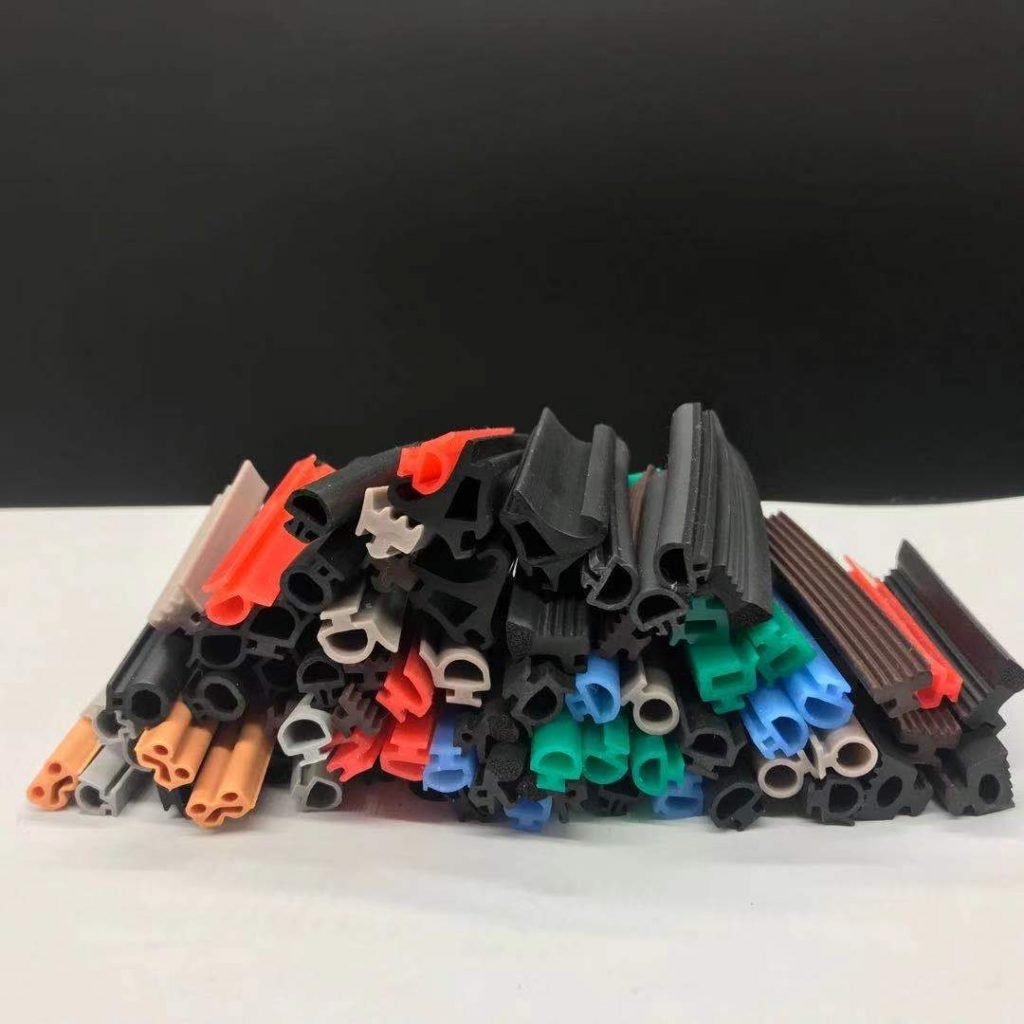Vulcanized rubber sealing gasket
Generally, it is made of EPDM material. Excellent overall performance, outstanding ozone resistance, excellent weather resistance, good high temperature and low-temperature resistance, outstanding chemical resistance, resistance to a variety of polar solutes, and low relative density. The disadvantage is that it has a large amount of expansion in general mineral oil and lubricating oil, and it is generally a dark-colored product. The operating temperature range is -60~+150℃. With its wide application range and excellent comprehensive performance.
Silicone rubber sealing tape
It has outstanding high and low-temperature resistance, ozone resistance, and weather resistance; it has excellent hydrophobicity and appropriate air permeability; it has unparalleled insulation performance; it can reach the hygiene level of food hygiene requirements and can meet the requirements of various colors. The disadvantage is that the mechanical strength is the worst among rubber materials, and it is not resistant to oil. Operating temperature range -100~+300℃. It can be applied to areas with high temperature, cold, strong ultraviolet radiation, and middle and high-rise buildings.
Neoprene Sealing Strip (CR)
Compared with other special rubbers, the individual properties are worse, but the overall properties are well balanced. It has excellent weather resistance, ozone resistance, heat aging resistance, oil and solvent resistance, good chemical resistance and excellent flame resistance, and good adhesion. Poor storage stability, hardening will occur during storage, and cold resistance is not good. The relative density is relatively large. Generally black products. It is used in an environment where oil resistance, heat resistance, acid, and alkali resistance are required. The operating temperature range is -30~+120℃.
Nitrile rubber seal
The main feature is oil resistance and solvent resistance, but it is not resistant to media such as ketones, esters, and chlorinated hydrocarbons. It has good elasticity and mechanical properties. The disadvantage is that it is easy to age and crack in ozone and oxidation, and has poor cold resistance and low-temperature resistance.
Thermoplastic elastomer sealing tape
It has good elasticity and excellent wear resistance, good oil resistance, a wide adjustable range of hardness (Shore A hardness 65~80), excellent mechanical properties (tensile strength, elongation at break), excellent cold resistance, and chemical resistance are intertwined with corrosion performance, and the price of raw materials is higher. It is a recyclable material. The operating temperature range is -60~+80℃. It is suitable for earthquake-prone areas, near railways or factories with high-power cranes and other areas with strong vibrations, as well as areas with strong ultraviolet radiation.
Thermoplastic vulcanizate (TPV) sealing strip
It has the flexibility and elasticity of rubber and can be produced by plastic processing methods without vulcanization. The waste can be recycled and reused. It is a material with a wide range of properties. It has a good heat resistance and cold resistance, low relative density, oil resistance, and solvent resistance similar to neoprene, and it is not very good in compression set and abrasion resistance. The operating temperature range is -40~+150℃. It can be applied to cold, and middle, and high-rise buildings.
Plasticized polyvinyl chloride (PPVC) sealing tape
The materials are cheap and easy to obtain, with corrosion resistance, abrasion resistance, acid and alkali resistance and various chemical media, combustion resistance, and high mechanical strength; the disadvantage is that the plasticizer in the system is easy to migrate, and it becomes hard and brittle over time. Elasticity, not aging resistance, poor weather resistance, and low-temperature performance. Generally dark products. It is suitable for occasions where the light is not strong, the temperature changes little, and the climatic conditions are not bad.
Surface coating material
It is to coats polyurethane, silicone, polytetrafluoroethylene, and other substances on the surface of the sealing strip to replace the surface flocking of the traditional process. The coated sealing strip has good wear resistance and smoothness, especially the sealing strip coated with silica gel surface coating, the surface friction coefficient is small, which is conducive to the sliding of door and window sashes. Suitable for doors and windows with sliding doors and sashes. It is a substitute for traditional siliconized wool tops.



